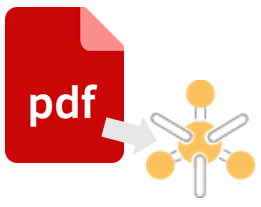Understanding the Technology Features that Compose Auros IQ
When learning the Auros IQ system, it’s important to first understand the main technological features that are used. What’s unique about our system is that all our features serve multiple capabilities within the system, allowing you to be creative on how you want to use the system, and the capability to use the system how you want to use it. The Auros IQ software features will highlight the following: Assessment Controls, Communities of Practice, Knowledge Packets, the Knowledge Processing Engine, and the Document Ingestor.




 A Community of Practice (CoP) reflects a naturally-occurring grouping of people within an organization, but not necessarily aligned to an org chart. The implementation of CoPs in Auros IQ is a fundamental enabler of Auros IQ’s bottom-up, adaptive capability. CoPs can be created, combined, modified, and form sharing relations with other CoPs. CoP have the ability to configure and adapt to their own special needs without needing to conform to top-down models and templates, and importantly, this is done without inhibiting the ease of cross CoP sharing and visualizing. With CoPs, Auros IQ can be applied broadly across an enterprise, into multiple functions and use-cases without IT support.
A Community of Practice (CoP) reflects a naturally-occurring grouping of people within an organization, but not necessarily aligned to an org chart. The implementation of CoPs in Auros IQ is a fundamental enabler of Auros IQ’s bottom-up, adaptive capability. CoPs can be created, combined, modified, and form sharing relations with other CoPs. CoP have the ability to configure and adapt to their own special needs without needing to conform to top-down models and templates, and importantly, this is done without inhibiting the ease of cross CoP sharing and visualizing. With CoPs, Auros IQ can be applied broadly across an enterprise, into multiple functions and use-cases without IT support. The Document Ingestor
The Document Ingestor